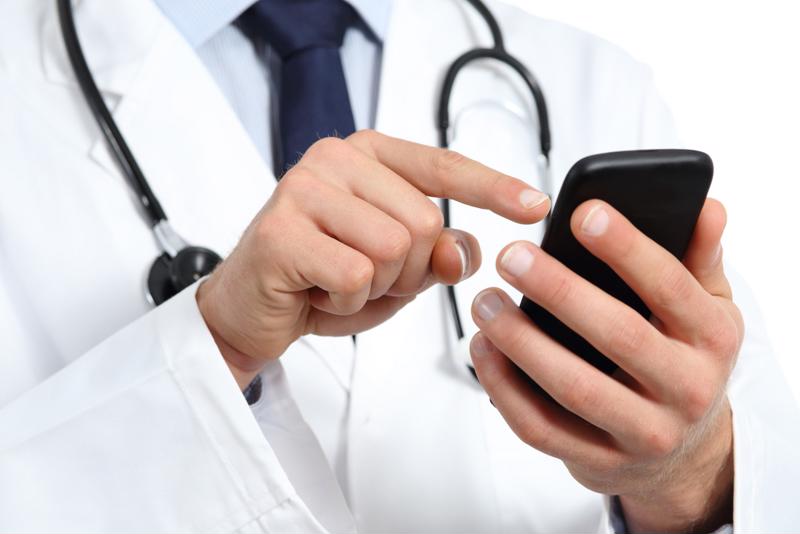Mobile devices are some of the most beneficial inventions of the 21st century. Their usefulness is so widely regarded that the Pew Research Center has stated that just under 70 percent of American adults have a smartphone, while nearly 45 percent own a tablet. While this technology has certainly changed the personal lives of millions of Americans, it’s also shaping up to revolutionize the workplace.
The bring-your-own-device trend has been majorly successful in multiple industries, but certain health care institutions are hesitant to implement such a solution. How can medical organizations improve patient care through BYOD, and how can they avoid the unique challenges and risks of BYOD in healthcare?
There are many benefits
Before diving into the trouble spots associated with BYOD in healthcare, it’s first important to understand what health care organizations can get out of BYOD. Of course, like any major trend, BYOD can bring a lot of benefits to any company, but an infographic made by Philips and posted on HIT Consultant’s site underscored the biggest advantages of allowing people to use their own gadgets for work-related purposes.
The infographic stated that the No. 1 driver for BYOD deployment within medical institutions was fostering better discussion and collaboration between co-workers. Communication is absolutely essential within any workplace, but it’s especially vital within health care. Getting employees to talk to each other more often ensures nothing gets lost in translation when a patient is moved to a new doctor or nurse, helping to make sure they get the care they so desperately need.
What’s more, the same infographic stated that another top driver of BYOD deployment in healthcare was improving access to the patient data. Most people, regardless of profession, have their smartphone on them at all times. This mindset means that a BYOD policy within a hospital would allow workers the ability to quickly look up vital patient information without having to worry about yet another device.
 BYOD in healthcare can help improve communication between medical professionals.
BYOD in healthcare can help improve communication between medical professionals.Challenges to BYOD in health care
Despite these many advantages, BYOD still has a long way to go within health care. The same Phillips infographic found that only 51 percent of those surveyed said their medical facility was currently operating under a BYOD policy. So why are so many organizations hesitant to move into BYOD?
Well, one of the main problems associated with this trend is the increased risk of cyberattack for companies that don’t properly prepare. A report from the International Data Corporation expected one-third of all American health care patients to get their private data hacked in 2016, according to International Business Times writer Jeff Stone. The medical industry is already a major target of cybercriminals, and many organizations simply don’t want to poke the bear.
“Poorly implemented BYOD solutions very often result in a breach of information.”
Sadly, poorly implemented BYOD solutions very often result in a breach of information. Although there are many reasons for this, the main one has to do with how people treat their personally owned devices. Very few users download security software onto their phones or tablets, and some don’t even utilize a PIN to lock their gadget. Neglecting these basic cybersecurity precautions enables hackers to easily gain access to patient data via these devices.
On top of that, employees very often forget about their responsibilities and the regulations of their industry, instead opting to use their smartphone or tablet to circumvent company policies. TechTarget’s Don Fluckinger outlined the risks employers have to mitigate when implementing BYOD.
“Employees will use their smartphones to text each other about patient care matters, which probably won’t amount to HIPAA-compliant practices,” said Fluckinger. “They’ll email patient data to each other. Physicians will set up rogue wireless access points to support devices they bring in, opening up your network to unsavory outside entities who cannot believe their good fortune in finding a backdoor to financial and medical identity theft.”
FoIP, combined with internal security measures, is a great solution
Even though BYOD certainly has its security problems, there are a few things administrators can do to avoid a breach. Fluckinger recommended that officials install security software on the gadgets their employees bring in that enables them to “lock down the network, encrypt data and remotely wipe lost or stolen devices.”
However, it’s also important to ensure that workers aren’t sidestepping regulations through their devices. Therefore, a solid solution to help ensure the security of patient information is to implement a Fax over IP solution. FoIP allows for the safe transmission of information via the internet that is also incredibly convenient. Employees are able to send and receive documents directly from their smartphone without having to worry about violating HIPAA. Not only does this foster communication, a major benefit of BYOD, but it also helps mitigate the many security problems associated with the trend.
Enhance enterprise communication, collaboration and compliance efforts with a proven FoIP solution from FaxCore. Contact FaxCore today to learn more about their ‘Partly-Cloudy’ fax solutions.





